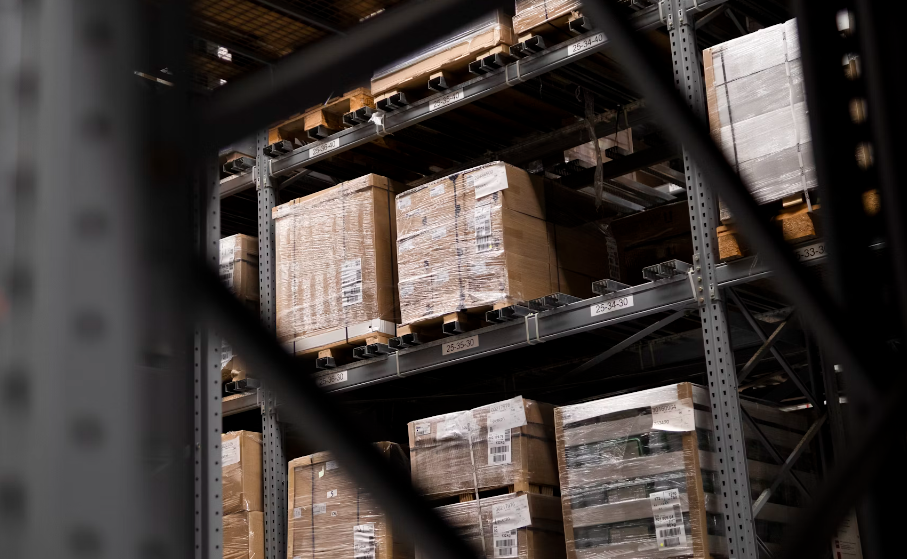Table of Contents
eCommerce Fulfillment: The Ultimate Guide for Beginners
Time: Jul 24,2024 Author: SFC Source: www.sendfromchina.com
As the eCommerce industry continues to grow, efficient order fulfillment processes have become crucial for online retailers. Ensuring fast, accurate, and cost-effective delivery is essential for meeting customer expectations and driving business success.Find a thorough exploration of the strategies and best practices necessary to optimize your operations on our comprehensive guide about e-commerce fulfillment.

1. Understanding eCommerce Fulfillment
eCommerce fulfillment is the process of receiving, packaging, and shipping orders to customers. The comprehensive fulfillment process ensures that products reach customers in a timely and efficient manner, enhancing the overall shopping experience and fostering customer loyalty. The ecommerce fulfillment process encompasses several key components, including inventory management, order processing, shipping, and returns handling.Order fulfillment can be managed in-house, outsourced to third-party logistics (3PL) providers, or a combination of both, depending on the scale and needs of the business. Regardless of the chosen method, the ultimate goal of eCommerce fulfillment is to deliver products to customers quickly, accurately, and cost-effectively.
eCommerce Fulfillment Processes
Ecommerce fulfillment processes typically include inventory management, order processing, picking and packing, door-to-door shipping, and handling returns:Inventory Management

Order Processing
Once an order is placed, it's time to get moving. Order processing involves verifying the order, ensuring payment has been received, and updating inventory levels. Speed and accuracy are crucial here to maintain customer satisfaction and avoid errors.Picking and Packing
It is where the rubber meets the road. Picking involves selecting the correct items from your inventory, and packing is about securely preparing them for shipment. Using a well-organized warehouse layout and efficient picking methods can significantly speed up this process.Door-to-door shipping
After packing, the next step is shipping. It involves choosing the best courier service, printing shipping labels, and dispatching the packages to the customer's door. You’ll need to balance speed and cost, selecting options that get products to customers quickly without breaking the bank.Handling Returns
Returns are an inevitable part of eCommerce. A clear and hassle-free returns process is vital for maintaining customer trust. Ensure you have a system to process returns swiftly and restock items efficiently.2. eCommerce Fulfillment Strategy
Creating a robust eCommerce fulfillment strategy is essential for your business’s success. A well-thought-out plan helps you manage costs, meet customer expectations, and scale your operations as your business grows.In-house Fulfillment

Pros of In-house Fulfillment
Control: Companies have complete control over the entire fulfillment process, ensuring quality and consistency in how orders are handled and shipped.Customization: Greater flexibility to customize packaging and delivery options to enhance the customer experience and reinforce brand identity.
Speed: Potentially faster turnaround times since the company can streamline operations and avoid delays that might occur with a third-party provider.
Cost Management: Avoids the fees associated with outsourcing, which can be beneficial for companies with lower order volumes or those that have the capability to manage fulfillment efficiently.
Direct Customer Feedback: Immediate access to customer feedback regarding shipping and packaging, allowing for quicker adjustments and improvements.
Data Security: Better control over sensitive customer data, reducing the risk of data breaches that might occur when sharing information with a third party.
Cons of In-house Fulfillment
High Initial Investment: Significant upfront costs for warehousing space, equipment, technology, and hiring staff.Resource Intensive: Requires dedicated resources and personnel to manage and maintain the fulfillment operations, which can be challenging for smaller businesses.
Scalability: May struggle to scale efficiently during peak seasons or periods of rapid growth, leading to potential delays and decreased service quality.
Complexity: Managing logistics, inventory, shipping, and returns can be complex and time-consuming, diverting focus from core business activities.
Technology and Expertise: Needs investment in the latest technology and expertise to maintain efficiency and competitiveness, which can be costly and require ongoing training.
Risk of Errors: Higher potential for human errors in inventory management and order processing, which can affect customer satisfaction.
Dropshipping

Dropshipping is an e-commerce fulfillment strategy where the retailer does not keep goods in stock. Instead, when a store sells a product, it purchases the item from a third party—typically a wholesaler or manufacturer—and has it shipped directly to the customer. It means the retailer never handles or sees the product.
Pros of Dropshipping
Low Startup Costs: Since you don't need to invest in inventory upfront, the initial capital required to start a dropshipping business is relatively low.Reduced Risk: You only purchase products after you have made a sale, reducing the risk of unsold inventory and decreasing overall financial risk.
Scalability: Easily scalable because the supplier handles inventory and logistics. It allows retailers to offer a wide range of products without worrying about storage space or logistics.
Flexibility: Can operate from anywhere with an internet connection, making it ideal for remote work and travel.
Product Variety: Ability to offer a broad assortment of products without the need to purchase and store each item, making it easier to test new products and market trends.
Cons of Dropshipping
Low Profit Margins: Since you’re purchasing from suppliers who also need to make a profit, margins can be slim. Additionally, the market is competitive, often leading to price wars.Inventory Issues: Relying on suppliers for stock means you have less control over inventory levels, which can lead to stockouts or delays if the supplier runs out of products.
Shipping Complexities: Shipping costs can be high and complicated if you work with multiple suppliers, each charging different rates and using different shipping methods.
Quality Control: Since you never see or handle the products, you have less control over the quality, packaging, and shipping times, which can affect customer satisfaction.
Supplier Dependency: The success of your business is heavily dependent on your suppliers’ reliability. Any issues with the supplier can directly impact your business operations and reputation.
Branding Limitations: Limited ability to customize products or packaging, which can affect brand identity and customer experience.
Third-party Logistics

Pros of Third-party Logistics
Expertise and Efficiency: 3PL providers specialize in logistics and supply chain management, offering expertise and efficiencies that can enhance operational performance and customer satisfaction.Scalability: Easily scalable to accommodate business growth, seasonal fluctuations, and changes in demand without the need for significant investments in infrastructure or staffing.
Cost Savings: Reduces the need for capital investment in warehousing and logistics infrastructure. Economies of scale and negotiated shipping rates can also lower overall fulfillment costs.
Focus on Core Business: Allows businesses to focus on their core competencies, such as marketing, product development, and customer service, rather than logistics and fulfillment.
Technology and Innovation: Access to advanced logistics technologies and innovations, such as warehouse management systems (WMS), real-time tracking, and automated processes, which can improve efficiency and accuracy.
Geographical Reach: 3PL providers often have multiple distribution centers, enabling faster and more cost-effective shipping to a broader customer base.
Cons of Third-party Logistics
Loss of Control: Outsourcing fulfillment means relinquishing some control over the logistics process, which can impact how orders are handled and delivered.Dependency on Provider: Dependence on the 3PL provider for timely and accurate fulfillment. Any issues with the provider, such as delays or errors, can directly affect customer satisfaction and business operations.
Integration Challenges: Integrating your systems with the 3PL provider's systems can be complex and time-consuming, potentially leading to disruptions during the transition period.
Costs: While 3PL can save costs in some areas, fees for services, storage, and additional charges can add up, making it important to carefully evaluate the cost-benefit ratio.
Communication Issues: Ensuring clear and effective communication with the 3PL provider is crucial. Miscommunications or lack of transparency can lead to errors and misunderstandings.
Branding Limitations: Customizing packaging and delivery experiences to align with your brand can be challenging when using a third-party provider, potentially impacting the customer experience.
Hybrid Model
The hybrid model in e-commerce fulfillment combines multiple fulfillment strategies, typically blending in-house fulfillment with 3PL or dropshipping. It also allows businesses to leverage the advantages of different fulfillment methods to meet their specific needs and goals.Pros of Hybrid Model
Flexibility: Offers the flexibility to handle different types of products and orders through the most efficient method, optimizing for cost, speed, and customer satisfaction.Scalability: Enables businesses to scale more efficiently by using in-house resources for core products while leveraging 3PL or dropshipping for peak periods, new products, or low-demand items.
Risk Management: Diversifies fulfillment risk by not relying solely on one method or provider, reducing the impact of potential disruptions in any single part of the supply chain.
Cost Optimization: Allows for cost optimization by using in-house fulfillment for high-margin or high-volume products and 3PL or dropshipping for other products, balancing cost and efficiency.
Enhanced Customer Experience: Can improve the customer experience by using the best fulfillment method for each order, such as faster shipping for urgent orders or personalized packaging for premium products.
Inventory Management: Better inventory management by keeping popular or high-turnover products in-house while outsourcing less frequently ordered items, reducing storage costs and inventory risks.
Cons of Hybrid Model
Complexity: Managing multiple fulfillment methods can be complex and requires sophisticated logistics management and coordination, increasing the operational burden.Integration Challenges: Integrating different systems and processes (e.g., in-house inventory management with 3PL systems) can be technically challenging and time-consuming.
Higher Management Costs: Potentially higher management costs due to the need for skilled personnel and technology to oversee and coordinate multiple fulfillment strategies.
Inconsistent Customer Experience: Risk of inconsistent customer experience if not managed properly, as different fulfillment methods may vary in terms of packaging, shipping times, and service quality.
Data Synchronization: Ensuring real-time data synchronization across different fulfillment channels is crucial to avoid stockouts, overselling, and other inventory issues.
Vendor Dependence: While reducing reliance on a single fulfillment method, businesses still depend on multiple vendors, which can introduce complexities in vendor management and communication.
3. eCommerce Fulfillment Challenges

Inventory Management Issues
One of the primary problems arises from inaccurate inventory tracking, which can lead to overselling or stockouts. When inventory levels are not properly monitored or updated in real-time, businesses may sell products they no longer have in stock, resulting in canceled orders, refunds, and unhappy customers. Conversely, underestimating demand can lead to stockouts, causing delays in order fulfillment and potentially driving customers to competitors. Both scenarios damage a company's reputation and can lead to lost sales.Shipping Delays
Shipping delays are a significant e-commerce fulfillment challenge that can negatively impact customer satisfaction and business operations. When orders do not arrive within the expected timeframe, customers may become frustrated and lose trust in the brand. The dissatisfaction can lead to negative reviews, decreased repeat business, and a tarnished reputation. In the highly competitive e-commerce market, maintaining a positive customer experience is crucial, and shipping delays can quickly erode the loyalty and trust that businesses strive to build.Cost Management
Cost management is also a critical challenge in e-commerce fulfillment that can significantly affect a company's profitability and overall financial health. One of the primary cost-related issues is the expense associated with warehousing and storage. Maintaining adequate warehouse space to store inventory, especially for businesses with a large product range, can be costly. The costs include not only the physical space but also the associated expenses such as utilities, security, and personnel. Additionally, during peak seasons, companies may need to rent additional storage space, further increasing their operational costs.Returns Processing
Handling returns efficiently is often overlooked but is critical for maintaining customer satisfaction. A cumbersome returns process can lead to frustration and negative reviews. Unlike outgoing shipments, which can be streamlined and predictable, returns are often irregular and unpredictable, complicating warehouse operations. Processing returns requires additional labor and resources to inspect, restock, or dispose of returned items, adding to operational costs. The process can slow down other fulfillment activities, especially during peak periods when the volume of returns can surge.4. How Do You Know When You Need an eCommerce Fulfillment Partner

Increasing Order Volume
If you're consistently overwhelmed by the number of orders coming in, it might be time to outsource to handle the load. As order volumes grow, the complexity of operations increases exponentially. In-house teams that were once sufficient for a lower volume of orders may become overwhelmed, leading to inefficiencies and errors, which can manifest in delayed shipments, incorrect orders, and a decline in overall customer satisfaction. Partnering with a fulfillment provider can help ensure that these growing pains do not impact the customer experience negatively.Storage Constraints
Lack of storage space can hamper your ability to manage inventory effectively. A fulfillment partner with warehousing capabilities can alleviate this issue. As businesses grow and their product offerings expand, the need for additional storage space becomes inevitable. In-house storage solutions often become inadequate, leading to overcrowded warehouses and inefficient use of space. It can hamper daily operations, slow down order processing, and increase the risk of inventory mismanagement. Partnering with a fulfillment provider can alleviate these issues by offering ample, well-organized storage facilities that can accommodate growth.Focus on Core Business
If fulfillment tasks take time away from critical business activities like marketing and product development, outsourcing can free up your resources.Consistent Shipping Delays
Repeated shipping delays can harm your reputation. A professional fulfillment partner can help ensure timely deliveries.5. Tips to Choose an eCommerce Fulfillment Partner

Evaluate Experience
Look for partners with a proven track record in your industry. Their experience can translate to smoother operations for your business.Assess Technology
Ensure the partner uses up-to-date technology for inventory management, order processing, and shipping. Integration with your eCommerce platform is also essential.Check Scalability
Choose a partner that can scale your business. As your order volume grows, you’ll need a fulfillment provider that can keep up.Review Customer Service
Good customer service from your fulfillment partner can help resolve issues quickly and maintain customer satisfaction.Analyze Costs
Compare pricing structures and ensure you understand all fees involved. Look for a balance between cost and the level of service provided.6. Get Started with SFC Services
SFC stands at the forefront of order fulfillment with cutting-edge facilities in Shenzhen, China. Utilizing sophisticated software, we specialize in seamless and trustworthy fulfillment solutions for ecommerce, dropshipping, and crowdfunding platforms. At SFC, we are dedicated to accelerating your business growth through secure warehousing, efficient processing, customizable packaging options, and adaptable shipping strategies while saving you time and money.Whether you have or do not have a fulfillment partner, particularly your products manufactured in China, you should consider SFC. Click the button below and get help from SFC logistics experts.
What Makes SFC Special
Over 17 Years of 3PL and Order Fulfillment ExperienceAll-in-one Tracking Number
Popular Platform API Integration
30 Days of Free Storage
No Hidden Fee
Custom Packaging
Worldwide shipping solutions
Value-added Services

7. FAQs about eCommerce Fulfillment
What is eCommerce fulfillment?
eCommerce fulfillment is the process of storing inventory, processing orders, picking and packing products, shipping, and handling returns for online businesses.Why is eCommerce fulfillment important?
Effective fulfillment ensures timely and accurate delivery of products, which is crucial for customer satisfaction and repeat business.How do I choose between in-house fulfillment and a 3PL?
Consider factors like order volume, storage space, and your ability to manage fulfillment processes. In-house provides control, while 3PL offers scalability and expertise.What are common eCommerce fulfillment challenges?
Challenges include inventory management, shipping delays, cost management, and efficient returns processing.When should I consider a fulfillment partner?
If you're overwhelmed by order volume, facing storage constraints, experiencing consistent shipping delays, or need to focus on core business activities, it might be time to consider a fulfillment partner. Post Views:1457
Post Views:1457
Copyright statement: The copyright of this article belongs to the original author. Please indicate the source for reprinting.
Previous Post
All You Need to Know about Warehouse Monitoring
Next Post
TOP 8 Board Game Manufacturers in China: Your Ultimate Guide
TAGS
Hot Research
Recent News
- Third Party Logistics Definition, Process, and Advantages
- What Is Ecommerce Fulfillment? The Definition, Process, and Benefits
- Where Does Shein Ship From
- What Is End-to-End Fulfillment and How Does It Work for Cross-Border Ecommerce?
- How to Reduce Cross-Border Shipping Costs When Sourcing from China
Get a Custom China Fulfillment Solution with FREE Storage for 30 Days
 Want to know about our services, fees or receive a custom quote?
Want to know about our services, fees or receive a custom quote?
 Please fill out the form on the right and we will get back to you within a business day.
Please fill out the form on the right and we will get back to you within a business day.
 The more information you provide, the better our initial response
will be.
The more information you provide, the better our initial response
will be.





 TAGS:
TAGS: